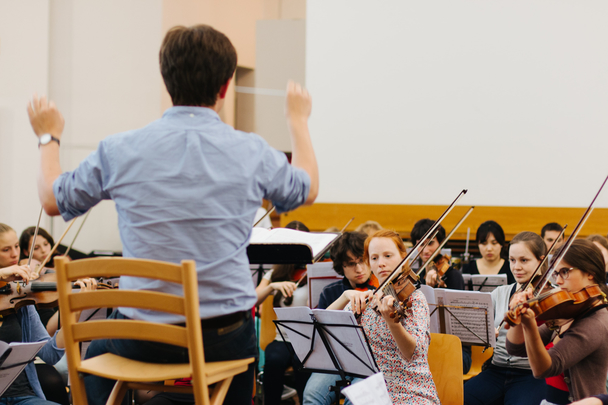
Photo: Sandra Meyndt
Strengthening some signalling pathways while weakening others is necessary for the brain to filter out information with behavioural relevance. When looking at the interaction of nerve cells, this process resembles the symphony of an orchestra.
A team from different research institutes and universities including Prof. Dr. Ilka Diester from the cluster of excellence BrainLinks-BrainTools and the Bernstein Center Freiburg have gained insight into possible modulation mechanisms of sensory input in the brain. Their study leads to a better understanding of selective attention. It has been published in the renowned journal "Neuron". They used a visual stimulus and optogenetic stimulation to induce a so-called local gamma rhythm, and then showed that this rhythmically modulates the response and the behavioural reaction times to unpredictable visual stimuli. The selection, adaption and modulation of stimuli is comparable to the work of an orchestra: Neuronal networks select a stimulus from a scene of stimuli and respond to it in a similar way as individual musicians adapt their playing to the visual input they receive from the conductor. When the stimuli, like in Diester’s experiment, are provided in a rhythmic flow, the dynamic communication is effective – like orchestra musicians becoming extremely susceptible and concentrated when they are totally in tune.
Original publication: